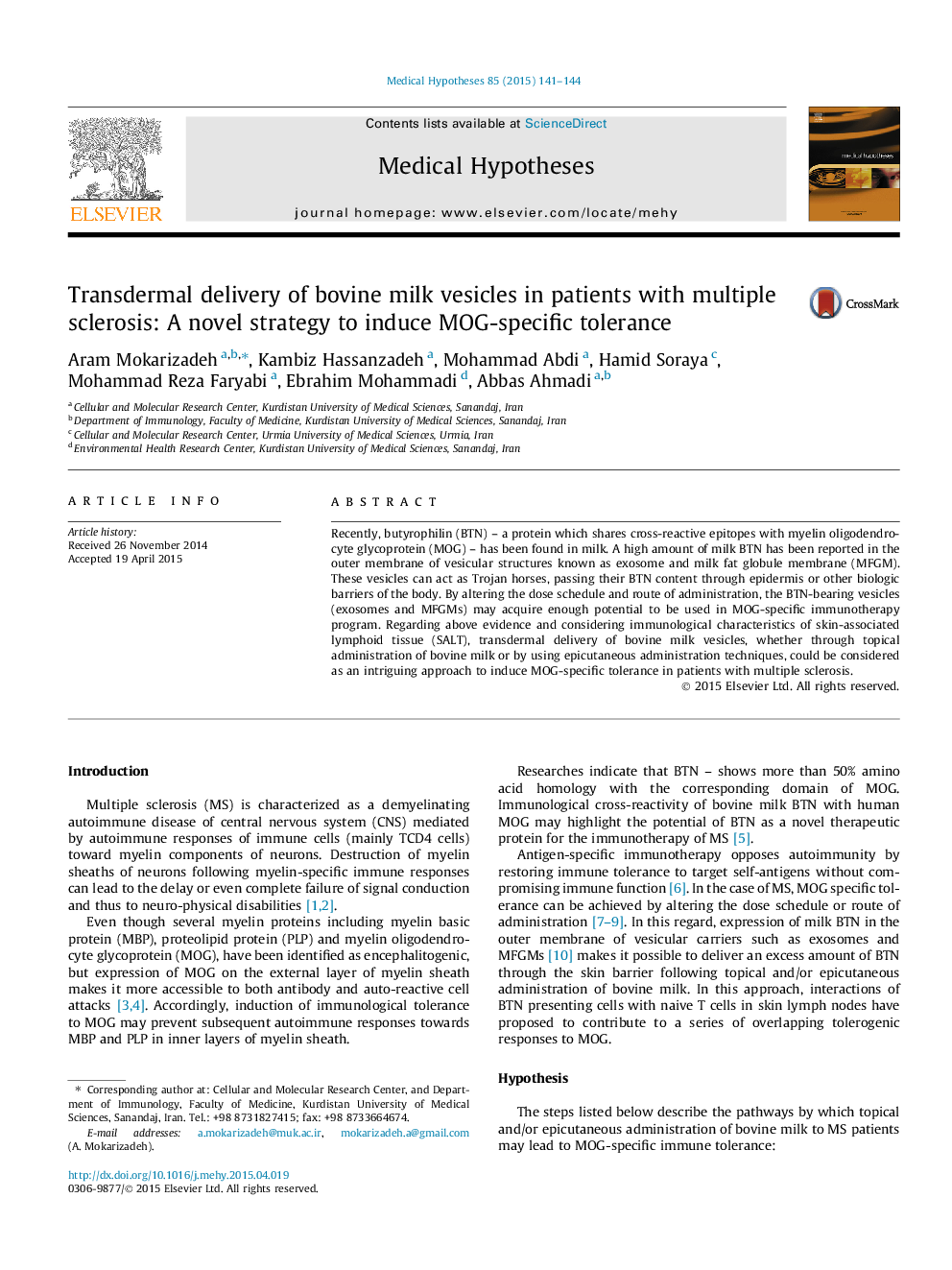| Article ID | Journal | Published Year | Pages | File Type |
|---|---|---|---|---|
| 5811064 | Medical Hypotheses | 2015 | 4 Pages |
Recently, butyrophilin (BTN) - a protein which shares cross-reactive epitopes with myelin oligodendrocyte glycoprotein (MOG) - has been found in milk. A high amount of milk BTN has been reported in the outer membrane of vesicular structures known as exosome and milk fat globule membrane (MFGM). These vesicles can act as Trojan horses, passing their BTN content through epidermis or other biologic barriers of the body. By altering the dose schedule and route of administration, the BTN-bearing vesicles (exosomes and MFGMs) may acquire enough potential to be used in MOG-specific immunotherapy program. Regarding above evidence and considering immunological characteristics of skin-associated lymphoid tissue (SALT), transdermal delivery of bovine milk vesicles, whether through topical administration of bovine milk or by using epicutaneous administration techniques, could be considered as an intriguing approach to induce MOG-specific tolerance in patients with multiple sclerosis.
